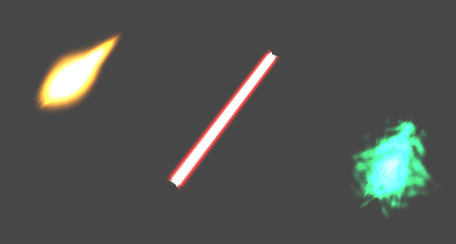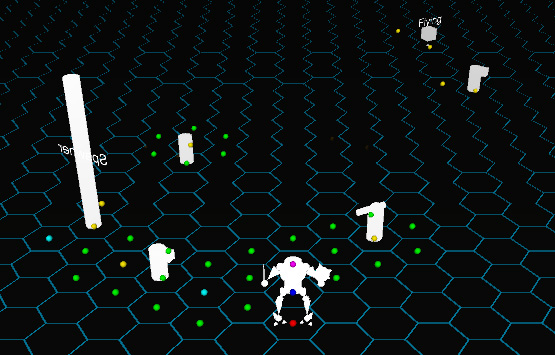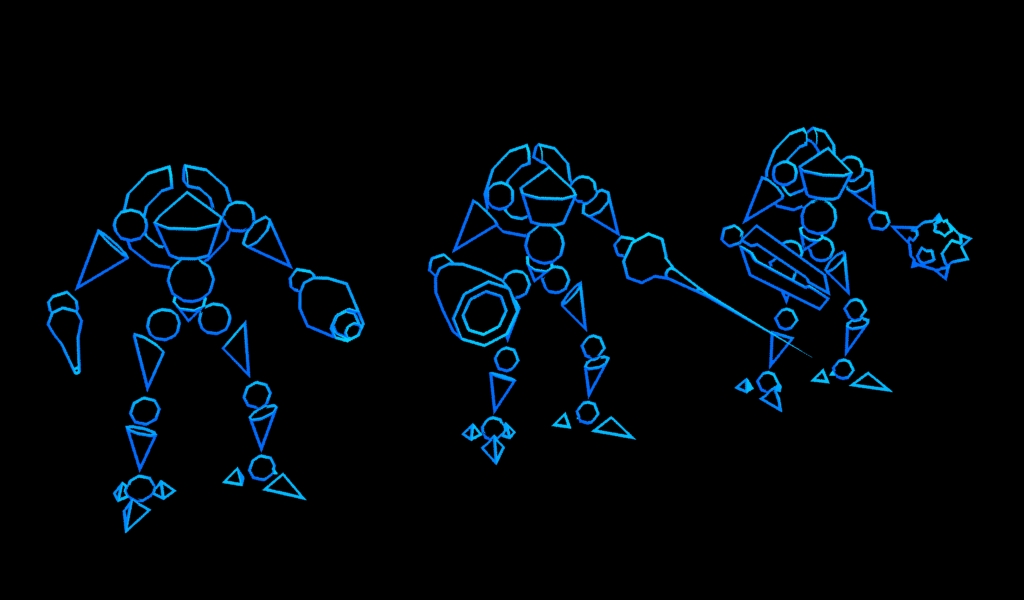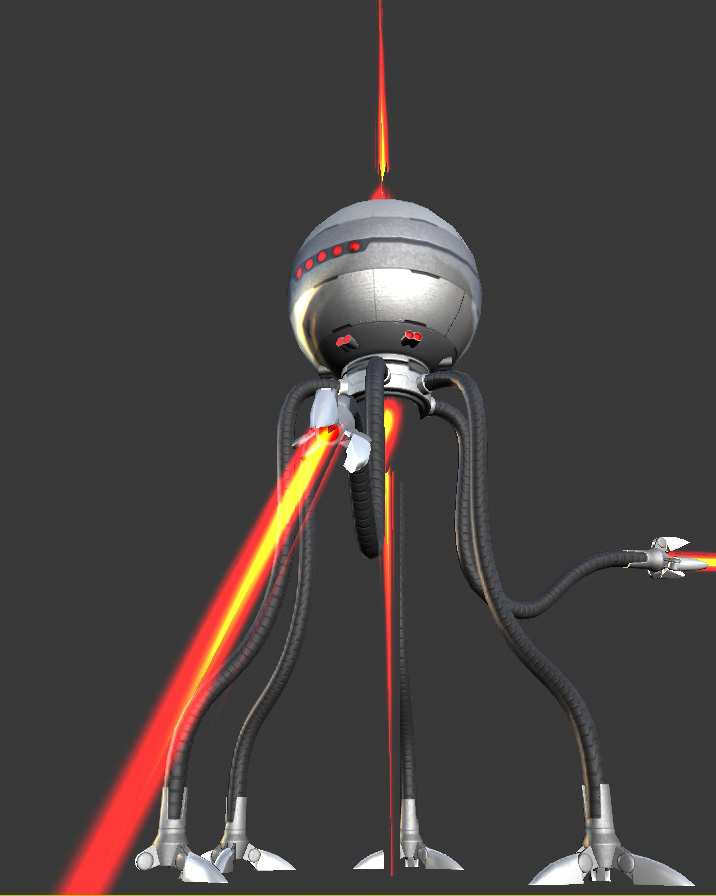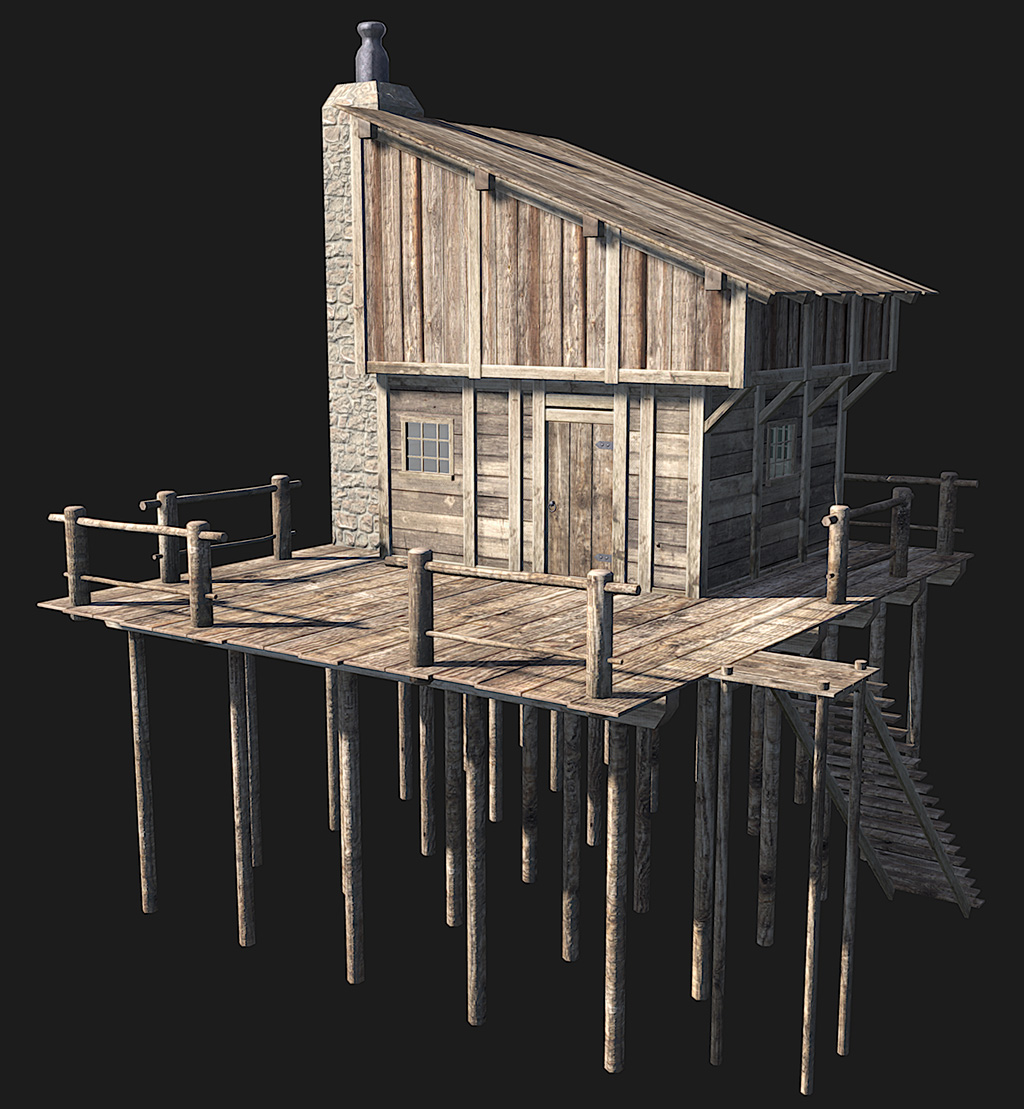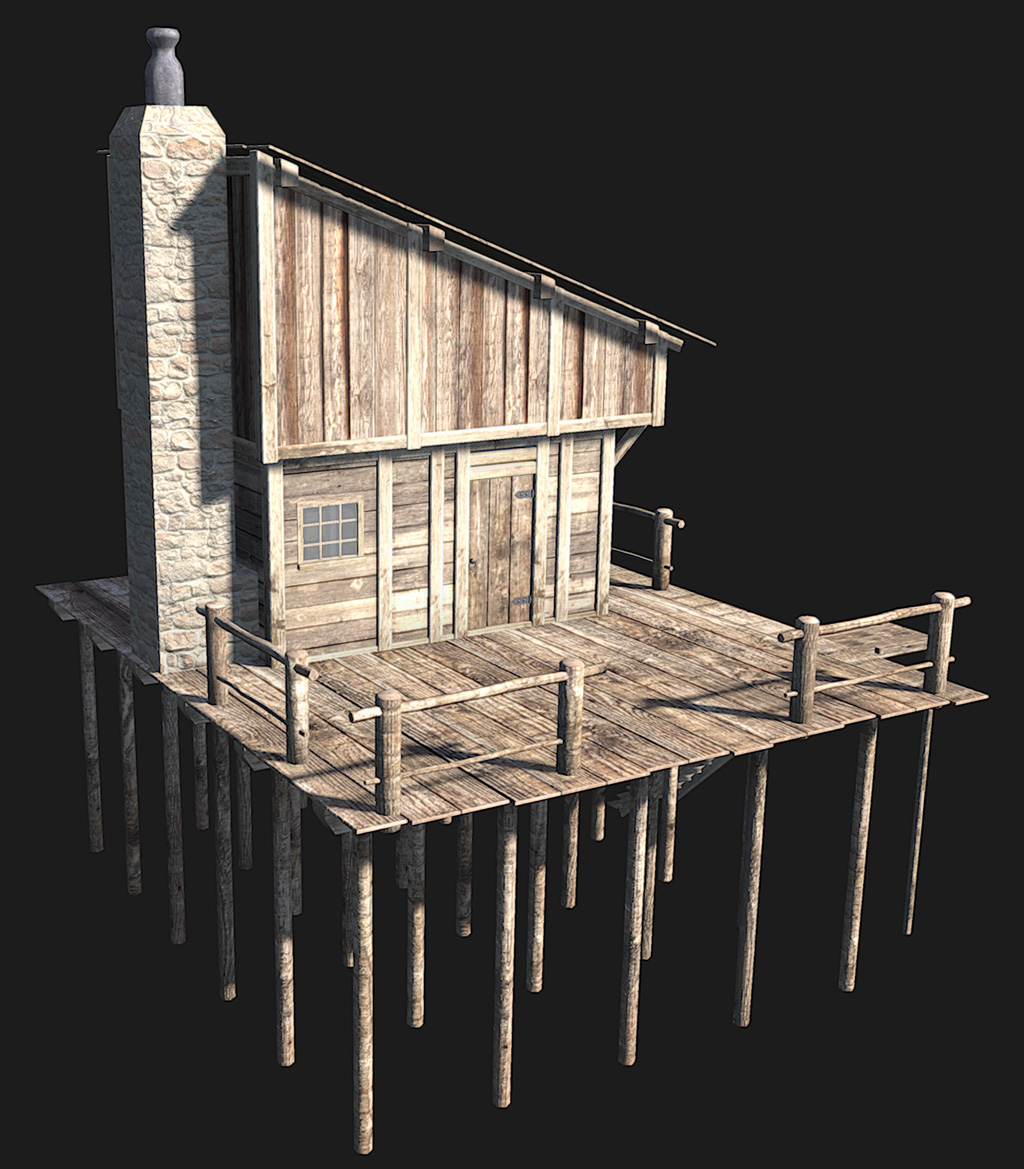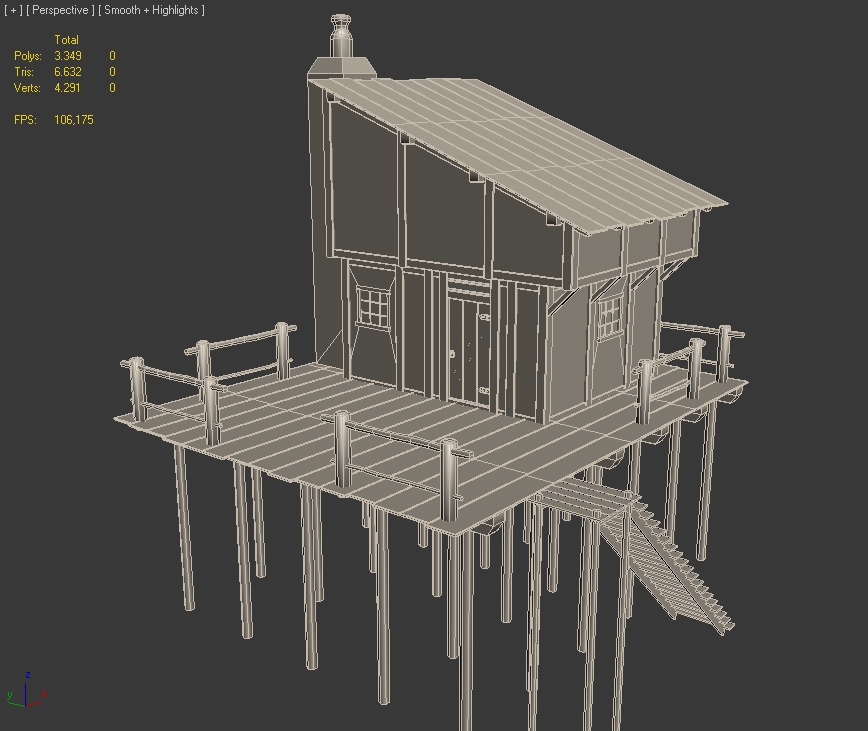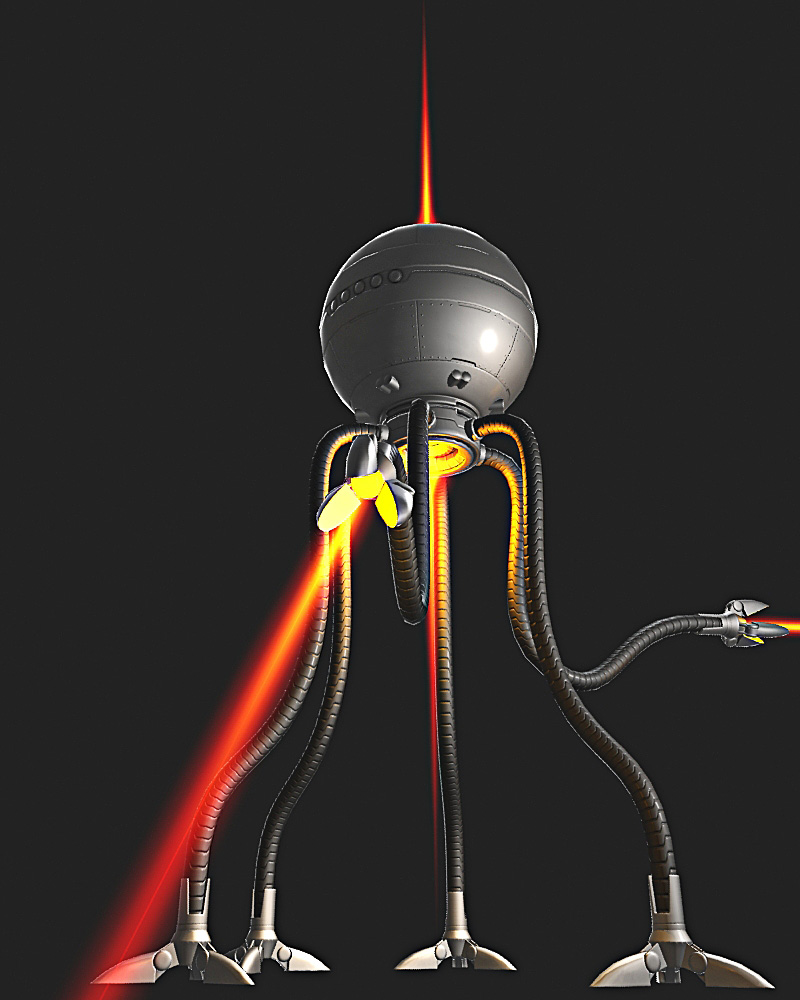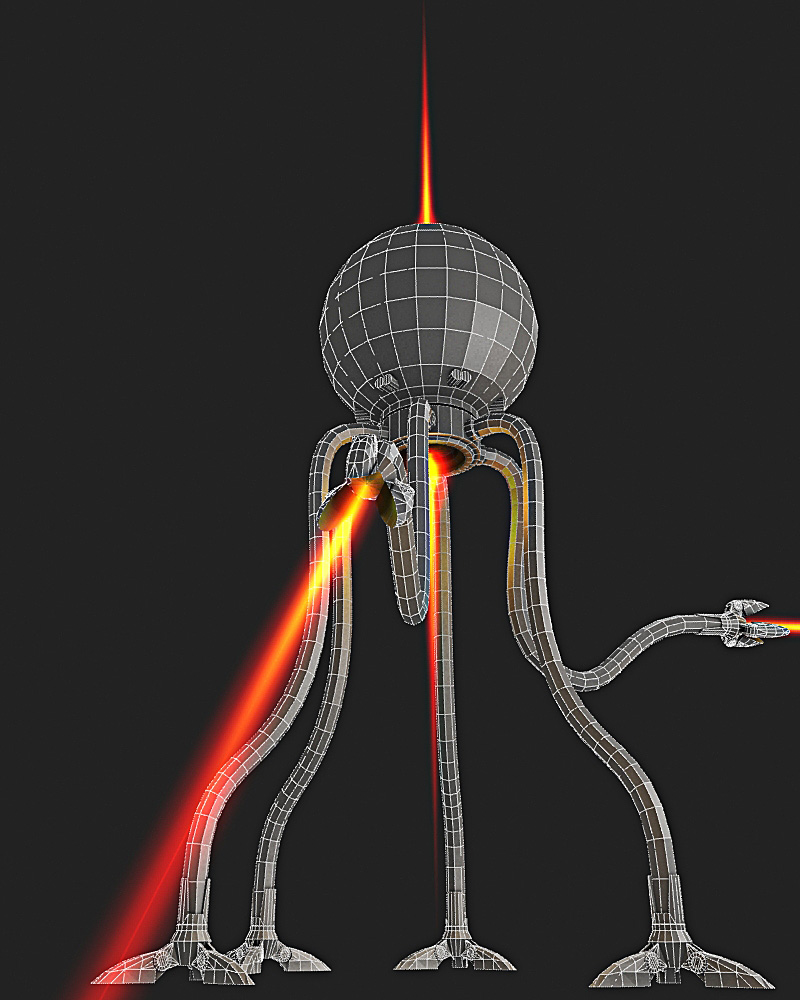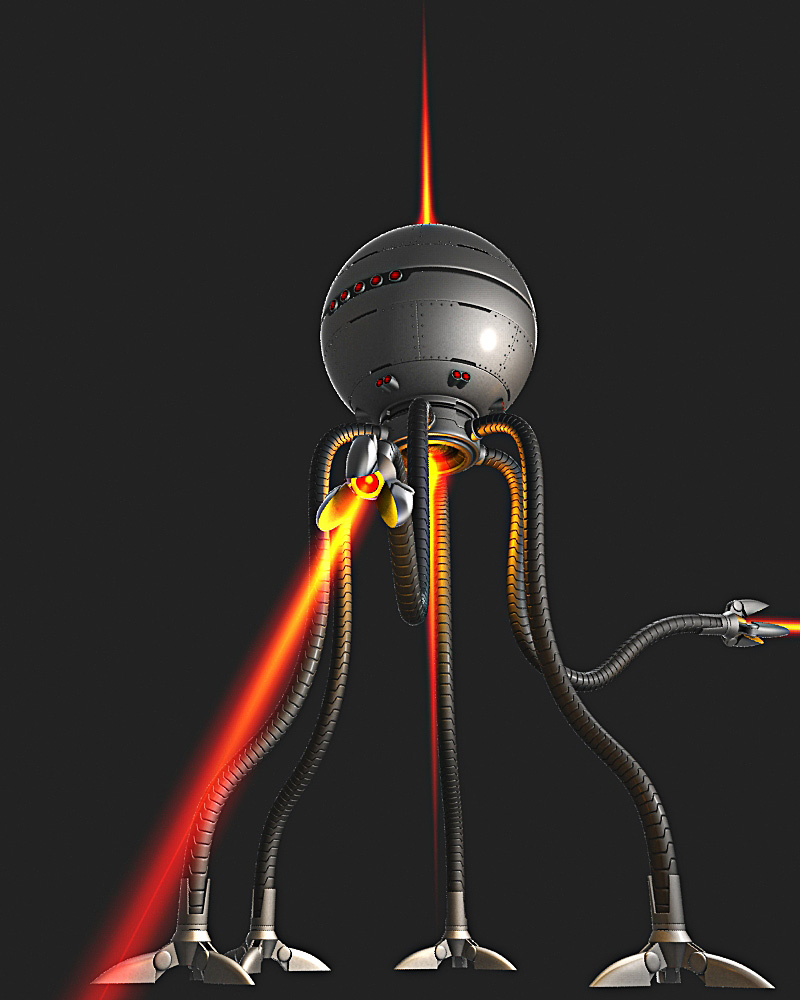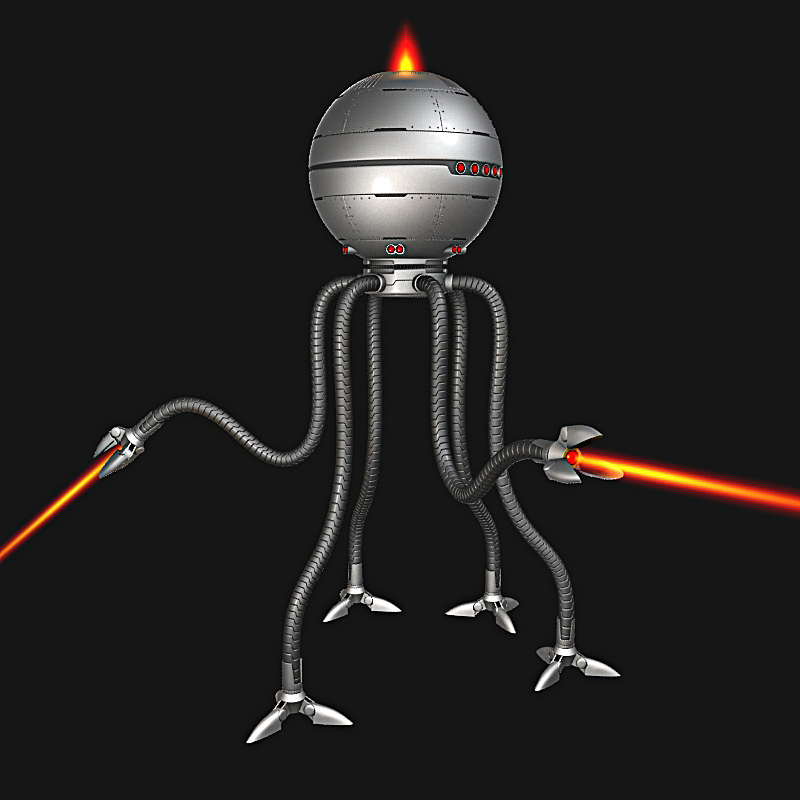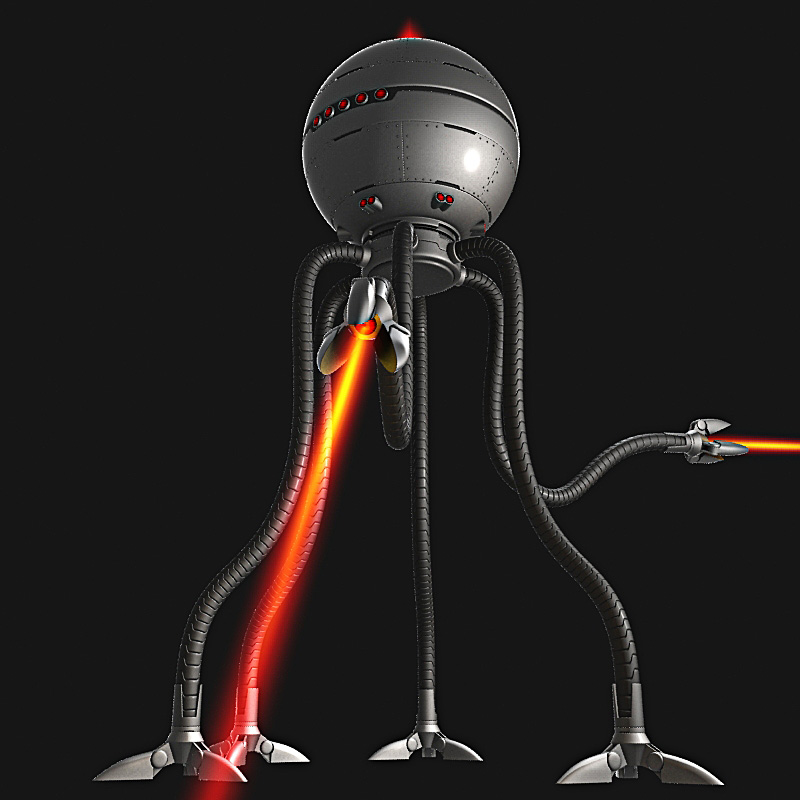I wrote a little script to let enemies shoot the player, whenever they are aware of him. They shoot only in the six cardinal directions, so they miss often, but it is still hard enough to not get hit, especially if you don’t play slow.
The player can now also shoot. He has two attacks (left and right arm), but I haven’t yet implemented melee or the ability to switch weapons during runtime. Hit detection also isn’t working yet, so even if you hit something, you don’t hit anything.
Here are the three basic projectile types (the player’s). Just three intersecting lanes with an alpha texture. They also use a script so I can change properties like rate of fire, damage and speed.
